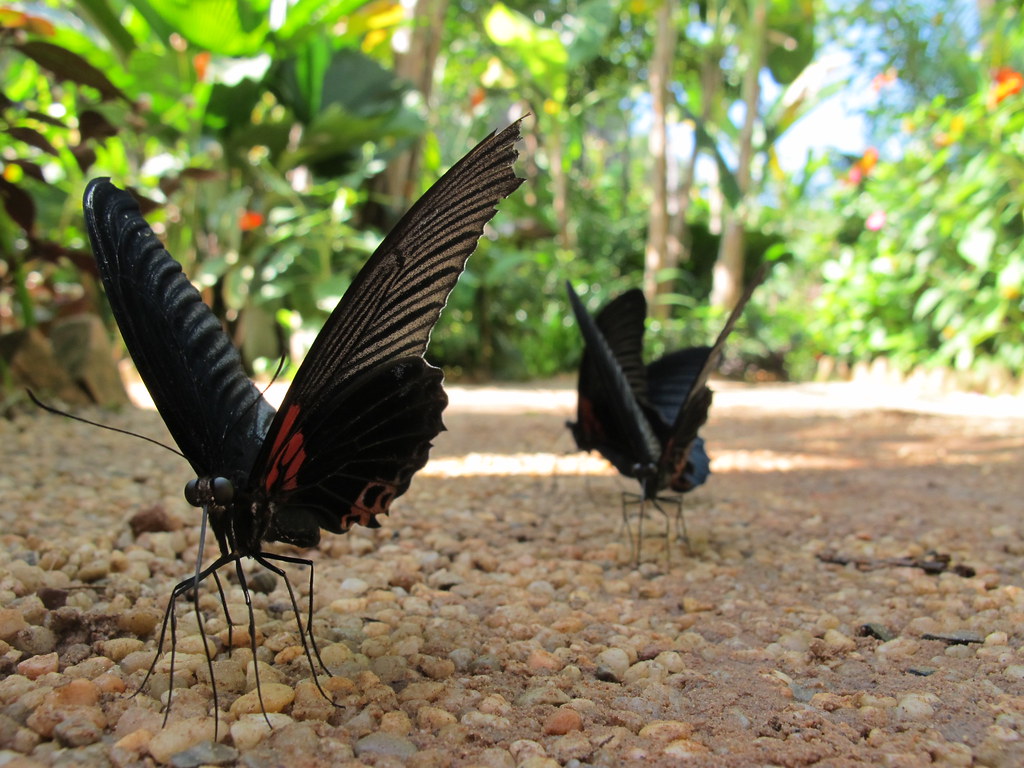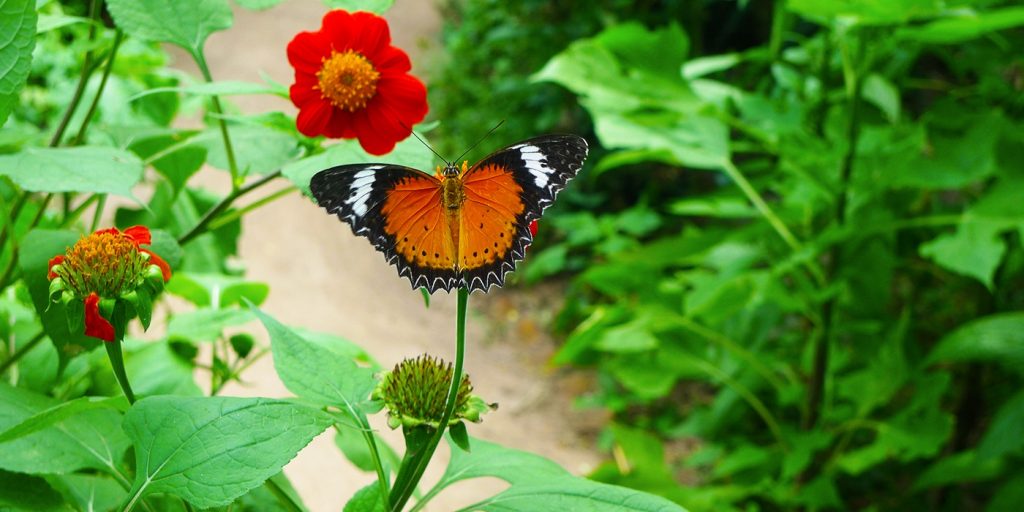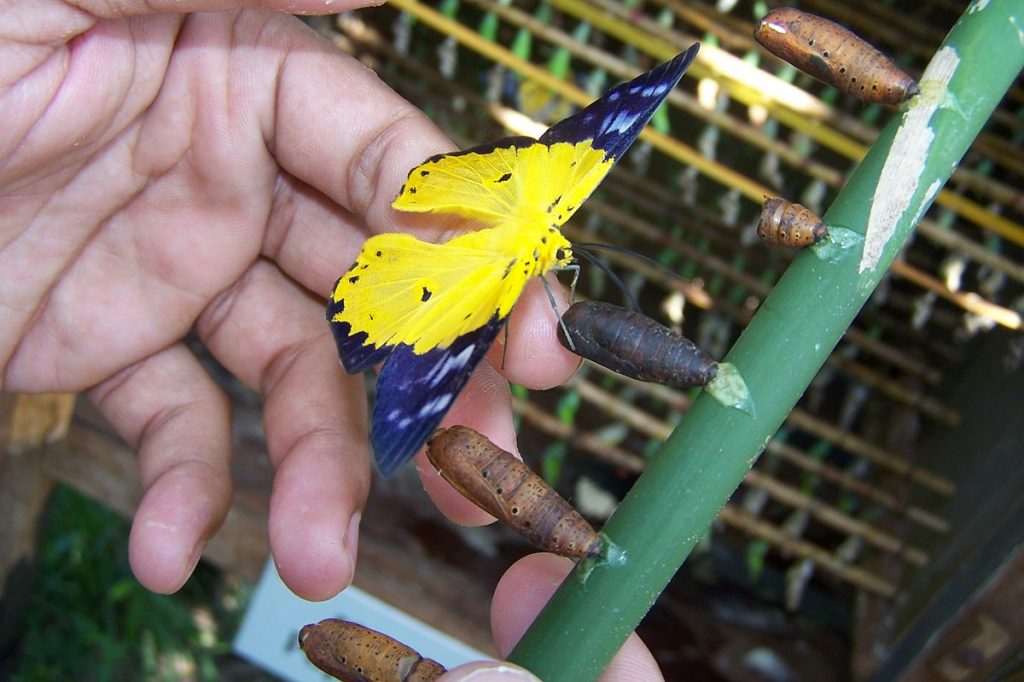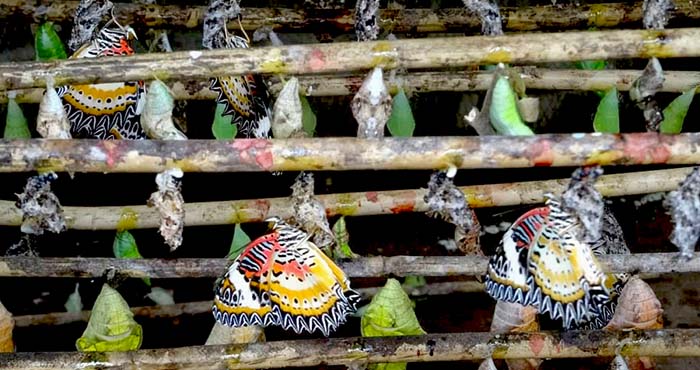Banteay Srey Butterfly Centre (BBC) is an interactive butterfly exhibit located 25 km north of Siem Reap, on the road to the Landmine Museum and Bantey Srey temple. The exhibit consists of a netted tropical garden with thousands of free-flying butterflies, all of which are native species to Cambodia. The enclosure is South East Asia’s largest outdoor butterfly exhibit and provides residents and tourists with an interactive and visual environment to learn about butterflies and support local communities.
At BBC it is possible to experience butterflies feeding and flying very close at hand to witness the complete life cycle of many species. The butterflies are farmed sustainably by people from villages in the Siem Reap Province.

The friendly and knowledgeable staff will greet you on your arrival and will explain the background to the project and about the butterfly lifecycle and ecology.
The Mission of BBC is to stimulate a fundamental change of biodiversity awareness that leads to sustainable use of our natural environment.
BBC has created the first butterfly research centre in Cambodia and serves as a biodiversity research and education centre. Butterflies and moths are a vital part of the ecosystem and are valuable as sensitive indicators of the health of our environment. Research is showing that butterflies and moths continue to decline at an alarming rate. That’s why their work includes biodiversity awareness programs and biodiversity surveys which will benefit other wildlife and the ecosystems upon which all life depends.

Their main goals are:
- Research, Educate, Show and Preserve the Flora and Fauna in Cambodia
- Recover threatened butterflies and moths
- Increase numbers of widespread species
- Inspire people to understand and deliver species conservation
- Promote international conservation actions.
- Promote sustainable agricultural principles to mitigate the effect of global warming and support biodiversity conservation
- Promoting the importance of connecting with nature for our mental and physical well-being
- Promoting butterfly farming as a sustainable form of agriculture
- Promote and develop green tourism projects in Siem Reap and the region

The center also helps the locals by butterfly farming. Butterfly farming is the breeding of pupae for sale to local butterfly exhibits or for export to zoos and live exhibitions overseas. Butterfly farms are situated in close proximity to areas of natural forest and provide an alternative, sustainable income to rural communities.
Most types of agriculture in tropical countries require forest clearance and this habitat destruction is a major cause of species extinction. Butterfly farming requires an intact forest, thus providing an economic incentive to conserve habitats. As butterflies are bred and reared in enclosures with limited extraction from the wild, farming has a negligible impact on the health of wild populations.

Butterfly farming allows the local community to diversify their income-generating activities and to work at home around childcare and domestic duties. It also raises awareness among residents and decision-makers about the benefits of biodiversity conservation.
In butterfly farming, a small netted enclosure is prepared. It is planted with the food plant for the target species of butterfly. A female butterfly is caught and placed in the breeding cage to lay her eggs on the food plant.

The freshly laid eggs are harvested by the farmer and placed in a pest-free container. Upon hatching the caterpillars, or larvae, will be transferred to their particular food plant in the farmer’s plant nursery. The growing larvae are tended by the farmers until they are ready to pupate. At pupation, larvae attach by their abdomen to a suitable leaf or stick and shed their skin to form the pupae. The pupae are the final product and will be sold to local and international zoos, botanical gardens, and butterfly exhibits
To ensure sustainability and unnecessary collection from the wild, the farmer will retain a proportion of pupae to provide the next generation of adults for the breeding cage. In order to boost the local butterfly biodiversity, 10-15% of the farmed butterflies will be released in the wild.
According to angkorbutterfly.com











